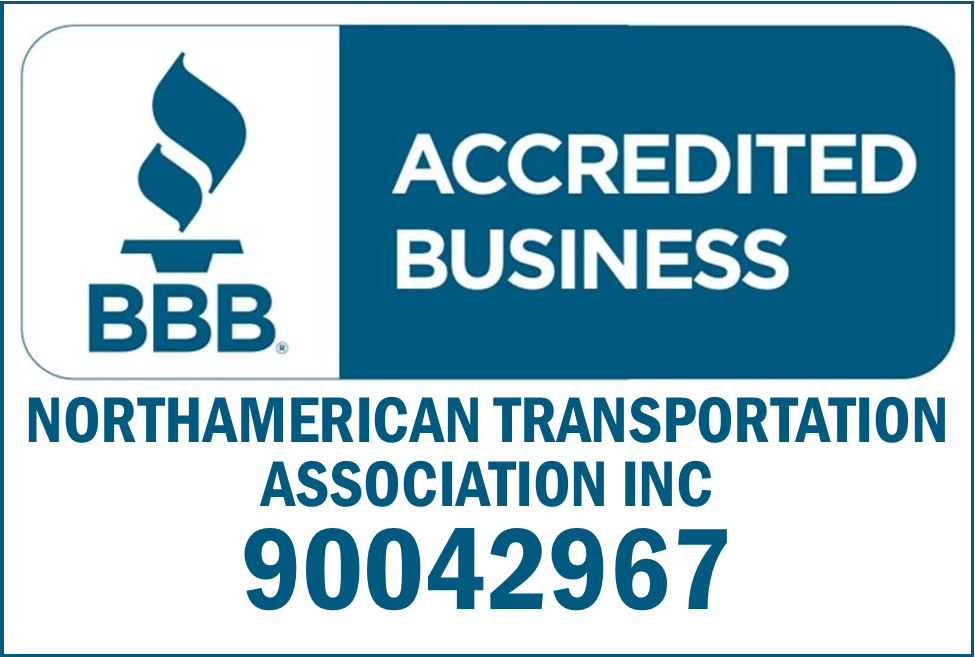What Truck Fleet Managers Need to Know About OSHA
If you're a trucking fleet safety manager, chances are you're familiar with federal Department of Transportation regulations affecting your company's operations. But what about OSHA, the Occupational Safety and Health Administration? Do its workplace regulations affect your company?
Generally, the federal Department of Transportation preempts OSHA's jurisdiction while vehicles operate on public roadways. OSHA’s jurisdiction is limited to vehicles operated in the workplace and not on public roads.
In addition, the DOT's jurisdiction covers interstate (between two states) commerce. OSHA’s jurisdiction extends to intrastate (within a state) commerce. For instance, OSHA’s jurisdiction includes gravel and sand haulers, logging, agriculture, and cement and concrete mixers, which are typically intrastate commerce activities.
Making the question more complex is the fact that many states have adopted federal DOT standards for intrastate commerce activity within their borders.
Is My Trucking Operation Subject to DOT, OSHA, or Both?
It can be confusing to know when and where the dividing line is between these two federal agencies.
For example, say a trucking company hauls building materials from its shop in Wisconsin to California. Another trucking company then delivers the building material to its final destination in California.
Although the second company travels entirely intrastate (in California), the original intent of the shipment is interstate and therefore covered by DOT regulations.
However, suppose the first company delivers to a warehouse in California. In that case, delivery trucks taking the building material from the warehouse to a construction jobsite are not considered involved in interstate commerce. The original manifest must not indicate the shipments were intended for the particular construction jobsite. Otherwise, it would be interstate commerce activity. If not, then OSHA would have jurisdiction over the intrastate commerce activity and not DOT.
What about yard trucks? Fleets of all sizes rely on yard drivers to move trailers safely and efficiently around the yard. Drivers who operate yard trucks in any area open to public travel, even if on private property, are subject to the Federal Motor Carrier Safety Regulations, with off-highway operations covered by OSHA safety regulations. This means these drivers must also understand which regulations apply to them and how to stay in compliance.
OSHA on Loading and Unloading
OSHA regulations cover off-highway loading and unloading at warehouses, plants, grain handling facilities, retail locations, marine terminals, wharves, piers, and shipyards, among others.
Its jurisdiction in the construction industry includes loading/offloading scrapers, loaders, crawler or wheel tractors, bulldozers, off-highway trucks, graders, agricultural and industrial tractors, and similar equipment.
Common safety issues to consider while performing loading and unloading activities include:
- Stacking.
- Storing.
- Lifting.
- Rigging practices.
- Rigging equipment.
- Powered industrial truck operations.
- Forklift operations.
- Safe working loads.
- Rigging inspections.
OSHA has a whole e-tool section on beverage delivery on its website, covering possible solutions to potential ergonomic hazards drivers face with doing things like unloading beverages, using hand trucks, and so forth.
OSHA and Vehicle Maintenance
In terminal operations, such as at a shipping warehouse, OSHA regulates the performance of all vehicle maintenance activities. It also regulates mobile maintenance activities on public roadways such as highways.
DOT regulates the roadworthiness of the vehicle. OSHA is concerned with the safety and health of the employees performing such maintenance tasks.
Drivers or technicians performing vehicle maintenance can be exposed to chemicals. Safety data sheets must be provided to maintenance workers, and employers must ensure the manufacturer's recommendations are followed to minimize exposure to hazards.
In addition, if workers perform hot work, such as making repairs by welding, a hot work permit must be issued. Appropriate fire prevention and protection measures must be in place to prevent fires and address any fire event, such as training workers to use a portable fire extinguisher or requiring workers to evacuate to a designated area.
Another common issue concerns the failure to chock trailer wheels. OSHA doesn't cite drivers for failure to chock commercial motor vehicle trailer wheels because DOT regulation preempts enforcement. However, OSHA can enforce chocking requirements on trucks used in intrastate commerce.
In addition, OSHA can enforce chocking requirements on CMVs used for interstate commerce if employees other than the driver enter the trailer. OSHA outlined this policy in an interpretation dated March 7, 2011.
Workers may need to perform lockout/tagout if exposed to hazardous energy, such as electrical components, while performing service and maintenance activities. This is a safety procedure used to ensure that dangerous equipment is properly shut off and not able to be started up again until the maintenance or repair work is completed.
Employers should ensure controls are in place to prevent cuts, abrasions, stains, and shock. Workers could become pinned against equipment and machinery, or worse, entangled or killed if safety guards are removed or not properly used.
Other exposures include irritation, sensitization, carcinogenicity, and physical hazards (such as flammability, corrosion, and reactivity.
Fall Protection on Trailers
When employees are on top of a semi-trailer, for whatever reason, fall protection is required if using it would be feasible. Even if there’s no overhead anchor, providing training on safe practices and precautions would is a good idea.
In a memorandum dated Oct. 18, 1996, OSHA explained, "It would not be appropriate to use the personal protection equipment standard... to cite exposure to fall hazards from the tops of rolling stock, unless employees are working atop stock that is positioned inside of or contiguous to a building or other structure where the installation of fall protection is feasible. In such cases, fall protection systems often can be and, in fact, are used in many facilities in the industry.”
Personal Protective Equipment
Using personal protective equipment, or PPE, can seem simple. Put on safety glasses, wear gloves, use steel-toe shoes, or put in earplugs.
The reality is much more complicated than that.
Injuries related to PPE in the transportation industry often stem from wearing the wrong type of equipment for the task, not wearing the PPE correctly, or not wearing the equipment because it wasn't clear what workers needed to do.
What's in it for your workers? Why do they even wear PPE? Understanding PPE requirements, using the right equipment, and learning how and when to use PPE is essential to protecting workers from injury and illness. Wearing it helps get workers home safely each day and keeps them injury-free.
Employers must perform a hazard assessment and identify hazards workers will be exposed to. This is called a PPE certification. Workers should be issued PPE, paid for by the employer, that is comfortable to use and fits properly.
Hazardous Materials
OSHA has limited authority over over-the-road vehicle operations. If spills occur while the material is on the vehicle or otherwise “in transportation,” OSHA's Hazardous Waste Operations & Emergency Response standard does not cover drivers.
It does, however, cover first responders who respond to the scene of the spill. And if drivers become actively involved in an emergency response, OSHA would consider them an emergency responder, subject to following OSHA's applicable health and safety requirements.
Distracted Driving, Back Safety, and OSHA's General Duty Clause
OSHA doesn’t have any specific standards on some topics, such as distracted driving or avoiding back injuries, but employers are expected to address such topics under OSHA’s General Duty Clause.
Under the GDC, when OSHA doesn’t have a standard about a certain hazard or safety issue to workers, employers must still address the issue by implementing controls and mitigating workers’ exposure to hazards.
For instance, employers must train workers how to avoid distracted driving. Perform a check ride with drivers and make observations about their driving habits. Correct any distracted driving behaviors and follow up with the driver to ensure corrective actions are effective.
Ergonomics and Musculoskeletal Injuries
Loading and unloading trucks involves the movement of products, not just with materials handling equipment like forklifts, conveyors, and overhead cranes, but also by hand. Manually handling loads, in turn, puts a lot of strain on an employee’s back.
In the trucking industry, injuries and illnesses involving the back account for numerous injury and illness cases, some involving days away from work each year, making back disorders a top concern. Some disorders are serious enough to require surgery, and some lead to permanent disability.
OSHA has no specific standard related to ergonomic lifting, which means there are no safe lifting techniques OSHA recommends officially.
However, ergonomic lifting and safe lifting techniques fall under OSHA's General Duty Clause, which requires employers to protect workers from serious and recognized workplace hazards. As a result, you must employ any "feasible and useful" method necessary to mitigate the danger.
Back Safety
While many people think that back disorders are acute and come from a single lift of a heavy or awkward load, back disorders often result from relatively minor strains that occur chronically over time.
Back safety applies ergonomic principles to any lifting or manual handling task. Teaching safe lifting techniques, for example, is a proven way to reduce employee lost time and workers’ compensation costs related to back disorders.
However, training is only half of the back safety picture. A complete back safety effort will also include the identification of back hazards at your facility, implementing engineering and administrative controls to reduce or eliminate those hazards, and managing any reports of back disorders.
DOT, OSHA Work Together on Driver Safety
Workers in the transport industry experience the most fatalities of all other occupations. DOT and OSHA will continue working together on driver safety issues.
Together, they provide employers, warehouse workers, and trucking drivers with information and assistance to help comply with federal standards and ensure transportation workers have a safe working environment.
What Can Trigger an OSHA Inspection?
OSHA has jurisdiction over approximately 7 million worksites. The agency seeks to focus its inspection resources on the most hazardous workplaces in the following order of priority:
- Imminent danger situations — hazards that could cause death or serious physical harm receive top priority. Compliance officers will ask employers to correct these hazards immediately or remove endangered employees.
- Severe injuries and illnesses — employers must report all work-related fatalities within 8 hours and all work-related inpatient hospitalizations, amputations, or losses of an eye within 24 hours.
- Worker complaints — allegations of hazards or violations also receive a high priority. Employees may request anonymity when they file complaints.
- Referrals of hazards — from other federal, state or local agencies, individuals, organizations or the media receive consideration for inspection.
- Targeted inspections — inspections aimed at specific high-hazard industries or individual workplaces that have experienced high rates of injuries and illnesses also receive priority.
- Follow-up inspections — checks for abatement of violations cited during previous inspections are also conducted by the agency in certain circumstances.
Content Disclaimer: Due to the constantly changing nature of government regulations, it is impossible to guarantee the total and absolute accuracy of the material contained herein or presented. NorthAmerican Transportation Association (NTA) cannot and does not assume any responsibility for omissions, errors, misprinting or ambiguity contained. NTA shall not be held liable in any degree for any loss, damage or injury caused by any such omission, error, misprinting or ambiguity present. It is made available with the understanding that NTA is not engaged in rendering legal, accounting or other professional service. If legal advice or other expert service is required, the services of such a professional should be sought.











